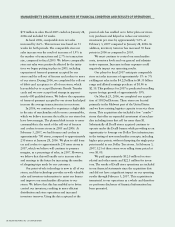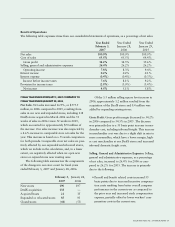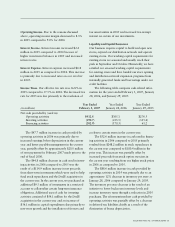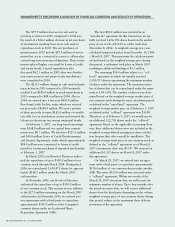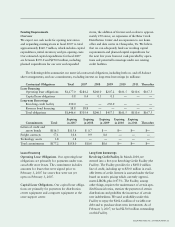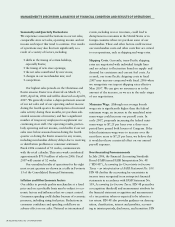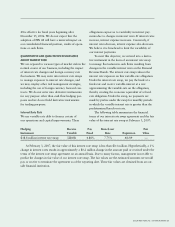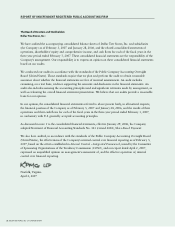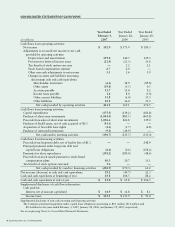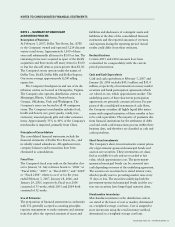Dollar Tree 2006 Annual Report Download - page 27
Download and view the complete annual report
Please find page 27 of the 2006 Dollar Tree annual report below. You can navigate through the pages in the report by either clicking on the pages listed below, or by using the keyword search tool below to find specific information within the annual report.
48 is effective for fiscal years beginning after
December 15, 2006. We do not expect that the
adoption of FIN 48 will have a material impact on
our consolidated financial position, results of opera-
tions or cash flows.
QUANTITATIVE AND QUALITATIVE DISCLOSURES
ABOUT MARKET RISK
We are exposed to various types of market risk in the
normal course of our business, including the impact
of interest rate changes and foreign currency rate
fluctuations. We may enter into interest rate swaps
to manage exposure to interest rate changes, and
we may employ other risk management strategies,
including the use of foreign currency forward con-
tracts. We do not enter into derivative instruments
for any purpose other than cash flow hedging pur-
poses and we do not hold derivative instruments
for trading purposes.
Interest Rate Risk
We use variable-rate debt to finance certain of
our operations and capital improvements. These
DOLLAR TREE STORES, INC. • 2006 ANNUAL REPORT 25
obligations expose us to variability in interest pay-
ments due to changes in interest rates. If interest rates
increase, interest expense increases. Conversely, if
interest rates decrease, interest expense also decreases.
We believe it is beneficial to limit the variability of
our interest payments.
To meet this objective, we entered into a deriva-
tive instrument in the form of an interest rate swap
to manage fluctuations in cash flows resulting from
changes in the variable-interest rates on the Demand
Revenue Bonds. The interest rate swap reduces the
interest rate exposure on this variable-rate obligation.
Under the interest rate swap, we pay the bank at a
fixed-rate and receive variable-interest at a rate
approximating the variable-rate on the obligation,
thereby creating the economic equivalent of a fixed-
rate obligation. Under the swap, no payments are
made by parties under the swap for monthly periods
in which the variable-interest rate is greater than the
predetermined knock-out rate.
The following table summarizes the financial
terms of our interest rate swap agreement and the fair
value of the interest rate swap at February 3, 2007:
Hedging Receive Pay Knock-out Fair
Instrument Variable Fixed Rate Expiration Value
$18.8 million interest rate swap LIBOR 4.88% 7.75% 4/1/09 —
At February 3, 2007, the fair value of this interest rate swap is less than $0.1 million. Hypothetically, a 1%
change in interest rates results in approximately a $0.2 million change in the amount paid or received under the
terms of the interest rate swap agreement on an annual basis. Due to many factors, management is not able to
predict the changes in fair value of our interest rate swap. The fair values are the estimated amounts we would
pay or receive to terminate the agreement as of the reporting date. These fair values are obtained from an out-
side financial institution.



